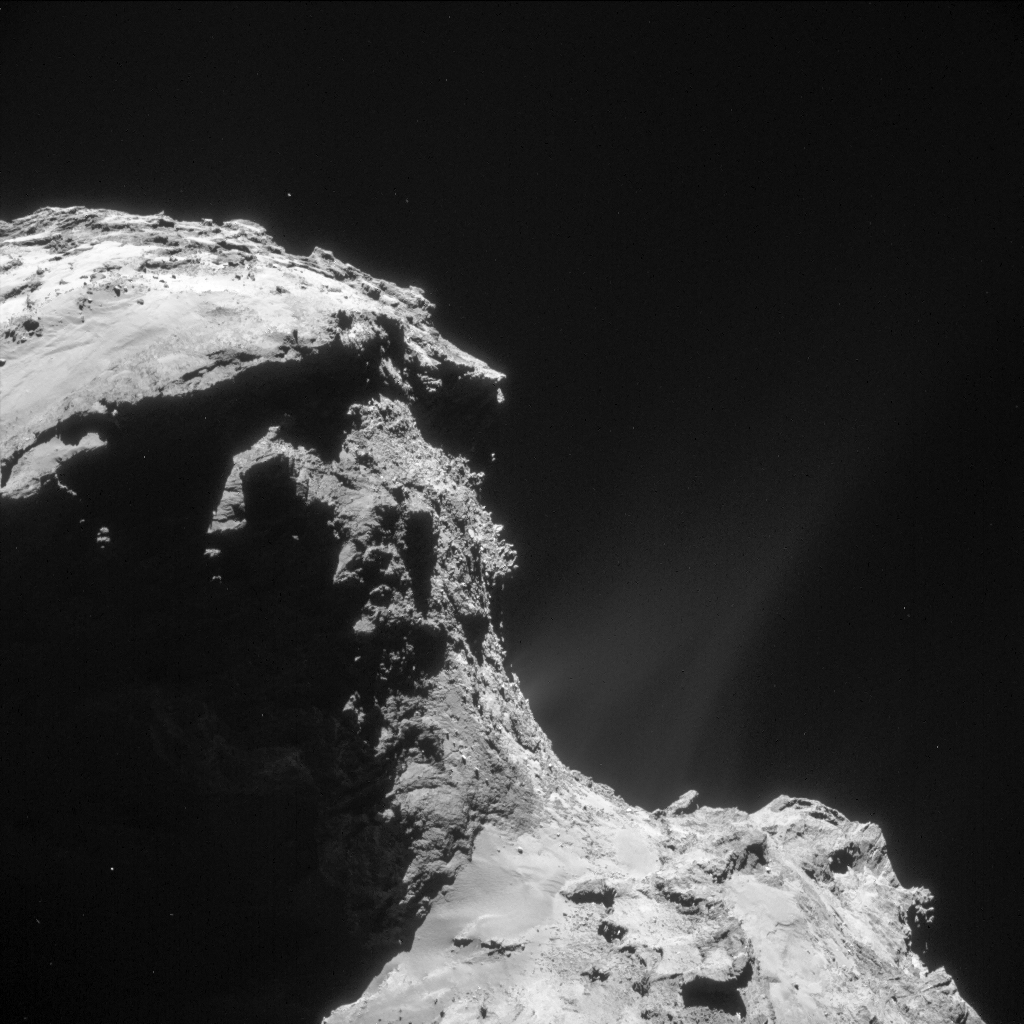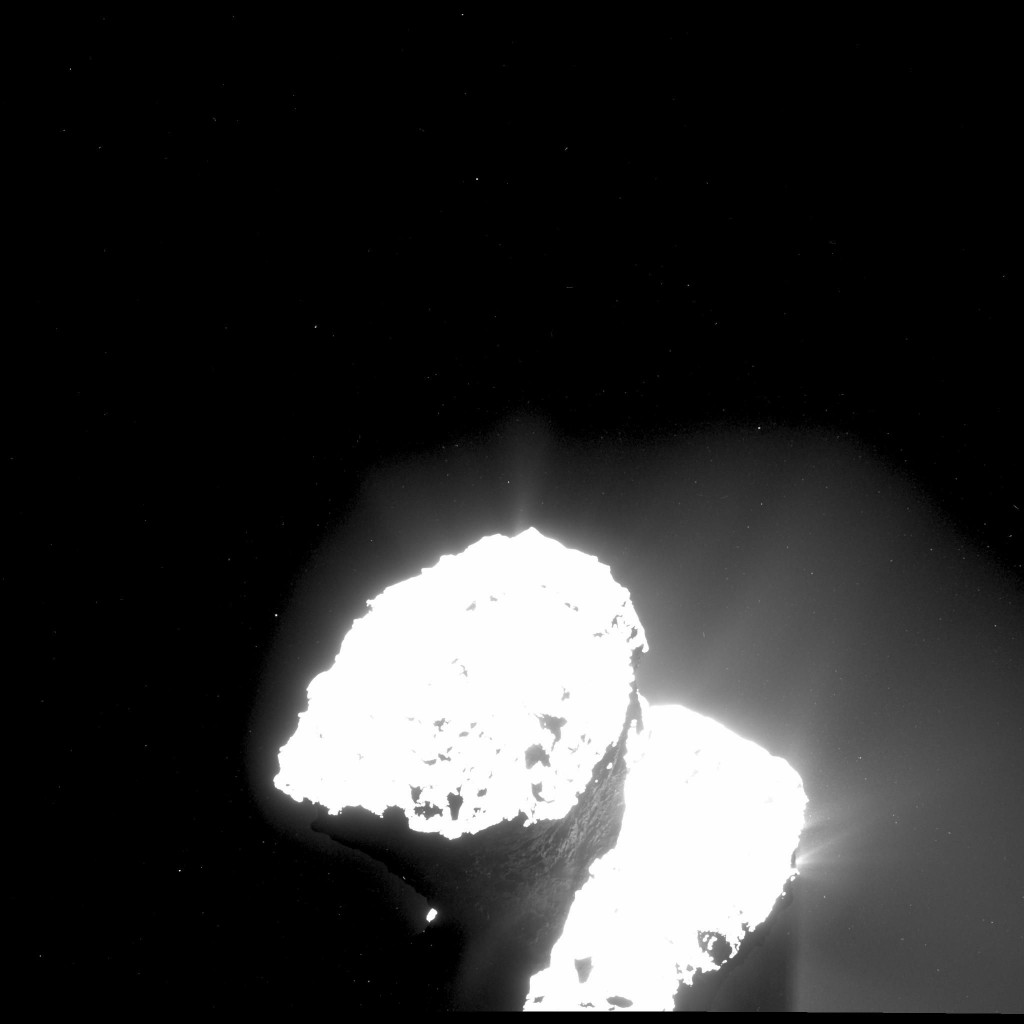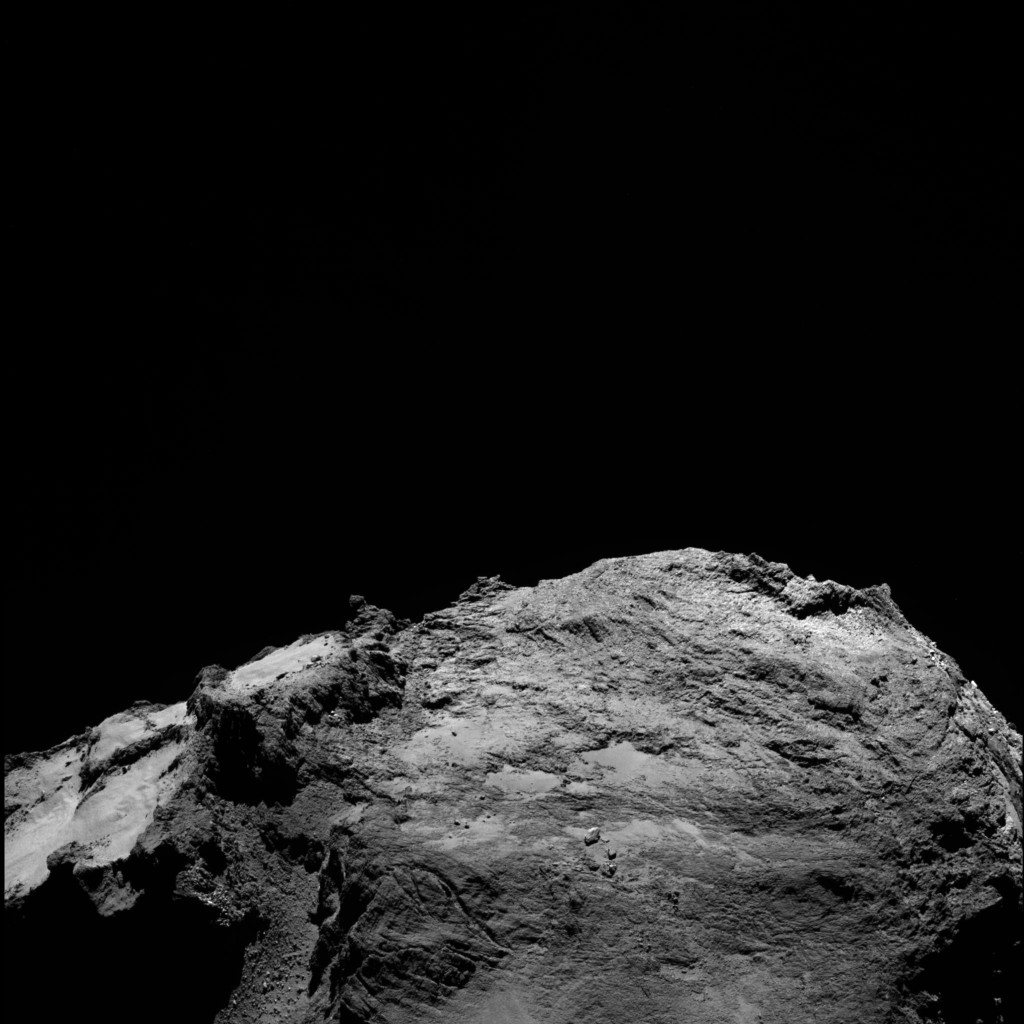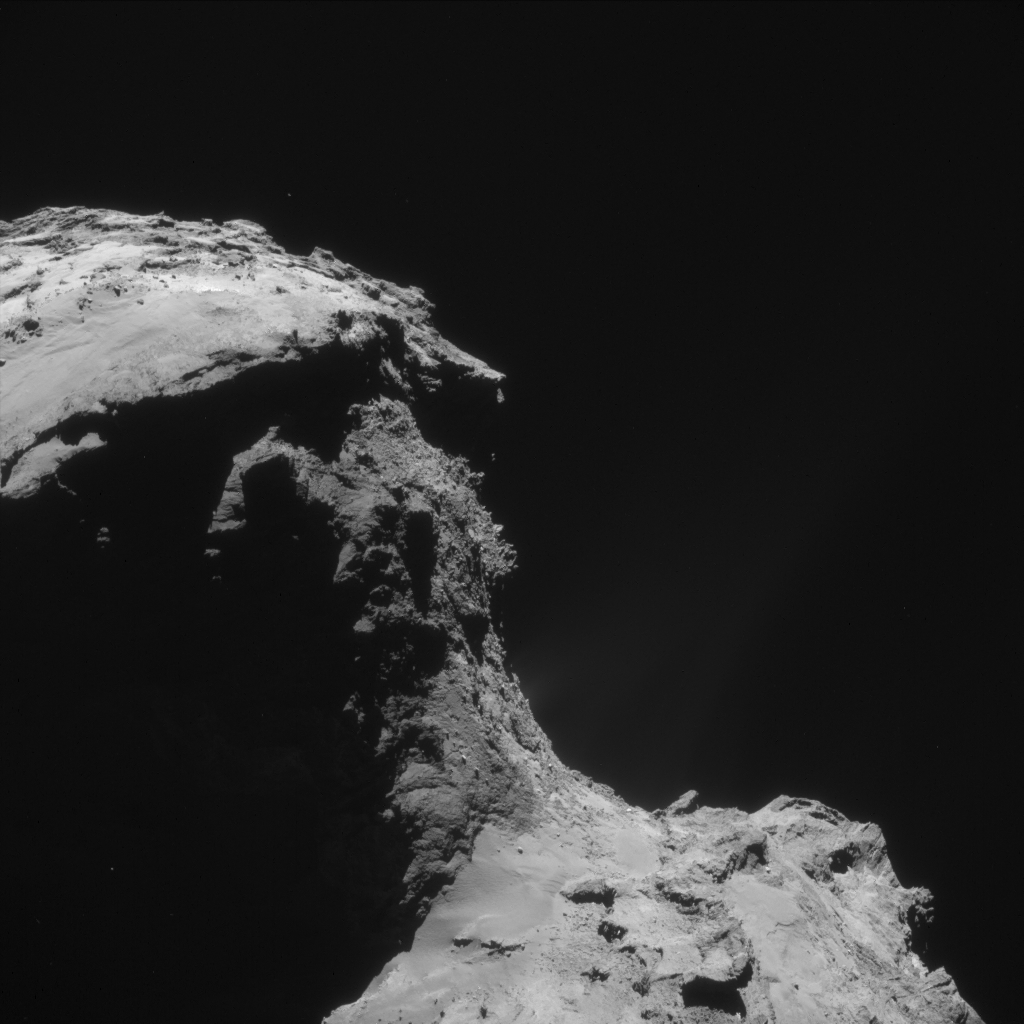This week’s CometWatch entry pictures Comet 67P/C-G as seen with Rosetta’s NAVCAM on 22 February, from a distance of 32.5 km to the centre of the comet.

Enhanced NAVCAM image of Comet 67P/C-G taken on 22 February 2016, 32.5 km from the nucleus. The scale is 2.8 m/pixel and the image measures 2.8 km across. Credits: ESA/Rosetta/NAVCAM – CC BY-SA IGO 3.0
At this close distance the comet nucleus overfills the camera’s field of view, but allows details of the surface to be seen at closer range than in previous weeks and months. This image focuses on the comet’s ‘neck’ region and the transition of smooth Hapi (centre) into Anuket to the left, and Seth on the large lobe to the right. Serqet is seen to the top left of the frame.
Furthermore, the composition of this image is such that traces of the comet’s activity are revealed, emanating from around the neck region and extending towards the top right of the frame.
This is nicely complemented by a wide-angle view taken by Rosetta’s OSIRIS wide-angle camera last week – and released today via the OSIRIS image of the day website – showing the current state of the comet’s activity all around the nucleus (below).

Comet 67P/C-G taken on 18 February by Rosetta’s OSIRIS wide-angle camera from a distance of about 35.6 km. The image scale is 3.45 m/pixel. Credits: ESA/Rosetta/MPS for OSIRIS Team MPS/UPD/LAM/IAA/SSO/INTA/UPM/DASP/IDA
Meanwhile the OSIRIS narrow-angle camera continues to capture ever-detailed views of the surface in high resolution. The image below was taken on 13 February and also released via the OSIRIS image of the day website this week.

Comet 67P/C-G taken on 13 February by Rosetta’s OSIRIS narrow-angle camera from a distance of about 46 km. The image scale is 0.84 m/pixel. Credits: ESA/Rosetta/MPS for OSIRIS Team MPS/UPD/LAM/IAA/SSO/INTA/UPM/DASP/IDA
The scene captures a detailed look at part of the Aker (foreground) and Khepry (background) regions, and extends into Babi towards the left of the image.
The original NAVCAM image for today’s CometWatch entry is provided below:










Discussion: 8 comments
The more pictures ones sees the more it seems that we need to revise our theories of what comets are and how they formed. Comet 67P does not look like a dirty snowball or an icy dirt balls. More like a dense frozen chocolate cake where the basic structure is fused together so once the volatiles are lost you are left with a solid structure with a dusty surface. What caused the structure to fuse together? What are the Rosetta scientists saying?
Could we get some information about Rosetta’s trajectory please? A visualization of the last few months of the trajectory would be great.
I recently noticed that a new application has been added on the blog’s main page called “Rosetta Now”. Unfortunately I haven’t seen any announcement on this behalf by the blog team.
The device can be used to replay the orbiters trajectory up to the day of the wakeup in 2014 in real time as well as in high speed mode !!!
Spectacular scenes i.e. on 2015-02-14, when Rosetta had its closest flyby up to 8 km so far!!! Date and time can be adjusted via the buttons.
The device has been developed by ESAC in Madrid to design Rosetta’s trajectory. It displays the actual position of the Orbiter in relation to the comet, what is important for the different science teams to adjust their various instruments.
I have been in contact with Bjoern Grieger, one of the developers, for some time. There may some adjustments to the direction of view for the upcoming “landing attempt” of Rosetta which hopefully will become another spectacular scene to be watched in “Rosetta Now”.
All in all – a great feature to attend the Rosetta Mission as close as possible.
Thanks to the ESAC team
Thanks, Thomas, enjoyed seeing that.
Kamal
Thanks a lot, I’d not spotted it. Back at 14km!
Yes, “Rosetta Now” is an interesting feature, I check it regularly. However, it is not so informative as I wish it would be. It lacks a proper 3D visualization of Rosetta’s trajectory around the comet and information about what scientific instrument is currently active with the field of view of the instrument (where it makes sense) projected over the comet.
Emily: Thanks for all the views of the activity. The close views we have seen of the southern hemisphere so far reveal several overhang/cave-type features inside which something is cooking. Would be interesting to see if there are sinkhole-type features (as in Seth in the picture above).
Now that rosetta is getting closer again, I was wondering if there might be ‘before & after’ fotos? What I mean is two fotos from the very same place, before and after perahilium. Would be nice to see the ‘damage done’